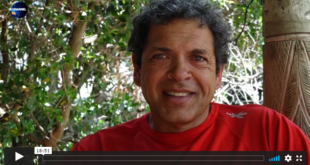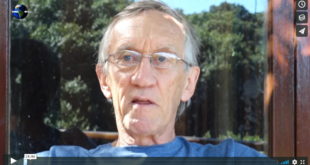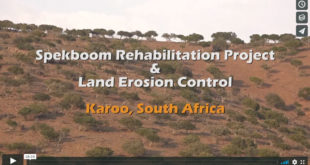In this presentation of Climate Matters.TV ~ Geoengineering~Our Last Chance (Part 1), at COP 22, Marrakech, Stuart Scott (UPFSI) talks with Prof. Peter Wadhams (Emeritus Prof. of Ocean Physics, Cambridge University) and Dr Hugh Hunt (Dept of Engineering, Trinity College, Cambridge University, UK), about reducing CO2 emissions, Geoengineering and Greenhouse Gas removal alternatives and methodologies.
In opening, Scott introduces the concept of RCP – Representative Concentration Pathways – theoretical pathways that the UNFCCC has asked the IPCC for, indicating possible trajectories that would spell the difference between climate disruption and climate chaos, followed by two short video clips: Assessing Implications of the four speculative RCP’s discussed by the IPCC, with Dr Matt Watson from School of Earth Sciences, UK and Prof. James Haywood from University of Exeter, Met Office, UK in 2014.
In exploring the various alternatives in terms of reducing CO2 emissions, reference is made to various methodologies, i.e. carbon diffusion, capture and storage, including geoengineering (engineering changes to our climate), e.g. solar radiation management (srmgi.org/what-is-srm/), Greenhouse gas removal, Marine cloud brightening (MCB) (sciencedaily.com/releases/2012/08/120820132359.htm), etc. with Prof. Wadhams expanding on the MCB technique and applications thereof.
Dr Hunt expanded on the ‘SPICE’ project (Stratospheric Particle Injection for Climate Engineering) modelled after a volcanic event in 1992 which caused cooling of the planet by +- 0.5 of a degree. Giving a basic demonstration of the principle, he stated that the research and engineering behind this form of geoengineering would have a very long delivery period, + 15-20 years, and taking the current state and expanding rate of global warming and climate change into account, the scientific community do not have time for approvals, governance or stakeholder involvement, etc. before proceeding with geoengineering research and development, it has to happen sooner rather than later! (.eng.cam.ac.uk/~hemh1/SPICE/SPICE.htm)
At Scott’s request, both Prof. Wadhams and Dr Hunt speak further on Greenhouse Gas removal, which both briefly identified and discussed, i.e. carbon dioxide, methane (permafrost), nitric oxides (agriculture/internal combustion engines), CFC’s. They talked further on the proposed methods to slow warming of Arctic ice shelves and in turn the frozen permafrost, by ‘returning the arctic sea ice’ in order to reduce the risk of major methane outbreaks, like Fracking concepts (Horizontal drilling), Extraction of CO2 from atmosphere and storage of 10Bn tons annually in CO2 storage sites and SPRNGG (Solar Photocatalytic Removal of Non-CO2 Greenhouse Gases.) – Solar Updraft Towers.
Q&A from the floor covered two subjects, viz; Saltwater Algae biofuel into building product, i.e. Sequestering carbon in building structures and 3rd Way Solutions in Tim Flannery’s book – Atmosphere of Hope (2014) – Carbon Capture and Storage.
Links:
geoengineeringmonitor.org/technologies/ Glossary of Geoengineering Technologies
cam.ac.uk/for-staff/features/the-engineer-who-keeps-the-clock-ticking Dr Hugh Hunt
.eng.cam.ac.uk/~hemh1/sprngg/sprngg.htm SPRNGG – Solar Photocatalytic Removal of Non-CO2 Greenhouse Gases
news24.com/SouthAfrica/News/govt-gives-green-light-for-shale-gas-fracking-in-karoo-20170330
lareviewofbooks.org/article/is-there-still-hope-a-climatologists-perspective/ Book ~ Atmosphere of Hope by Tim Flannery
 Mother Channel Environmental, climate change news and media.
Mother Channel Environmental, climate change news and media.



